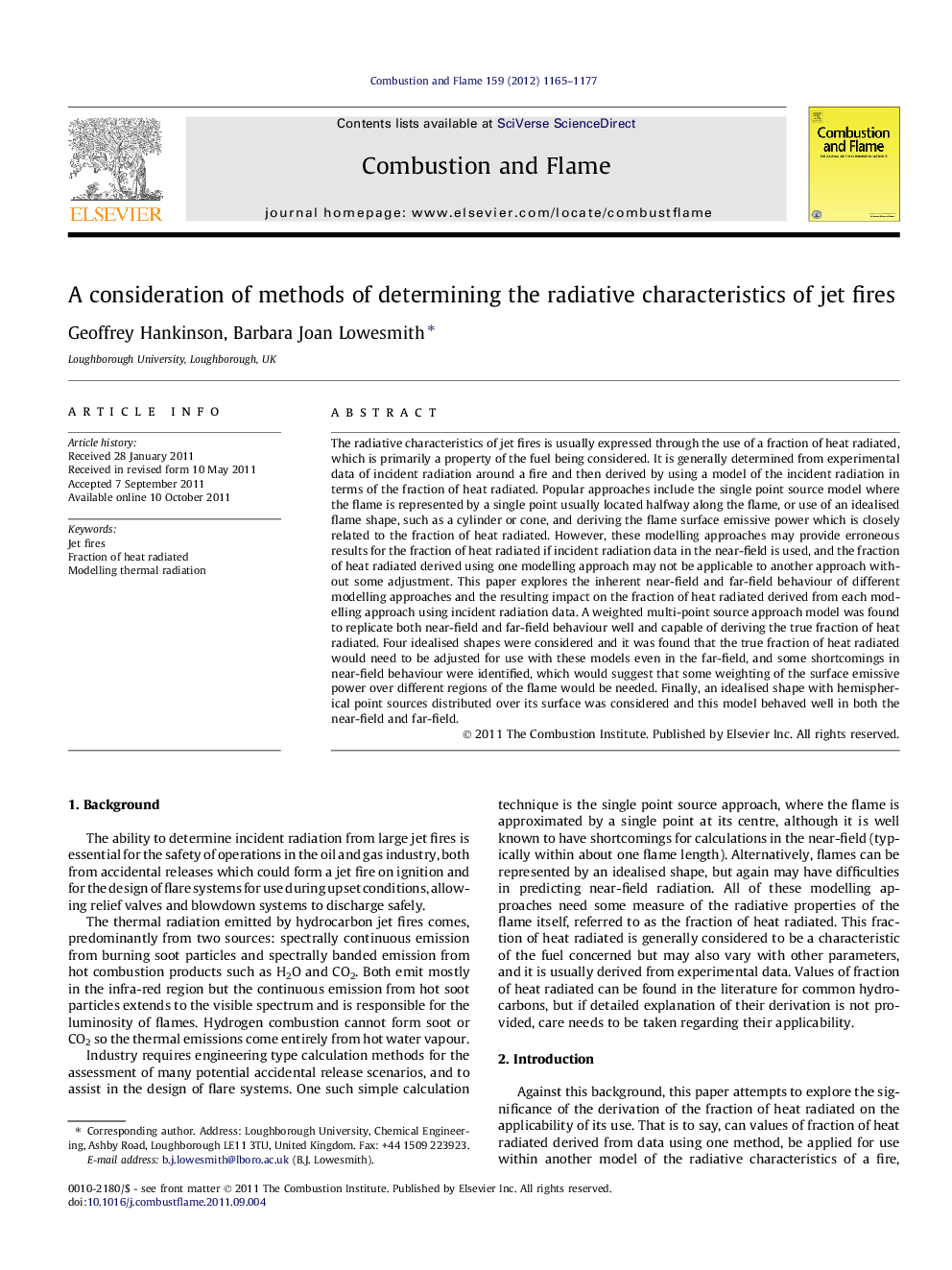| کد مقاله | کد نشریه | سال انتشار | مقاله انگلیسی | نسخه تمام متن |
|---|---|---|---|---|
| 169053 | 457973 | 2012 | 13 صفحه PDF | دانلود رایگان |

The radiative characteristics of jet fires is usually expressed through the use of a fraction of heat radiated, which is primarily a property of the fuel being considered. It is generally determined from experimental data of incident radiation around a fire and then derived by using a model of the incident radiation in terms of the fraction of heat radiated. Popular approaches include the single point source model where the flame is represented by a single point usually located halfway along the flame, or use of an idealised flame shape, such as a cylinder or cone, and deriving the flame surface emissive power which is closely related to the fraction of heat radiated. However, these modelling approaches may provide erroneous results for the fraction of heat radiated if incident radiation data in the near-field is used, and the fraction of heat radiated derived using one modelling approach may not be applicable to another approach without some adjustment. This paper explores the inherent near-field and far-field behaviour of different modelling approaches and the resulting impact on the fraction of heat radiated derived from each modelling approach using incident radiation data. A weighted multi-point source approach model was found to replicate both near-field and far-field behaviour well and capable of deriving the true fraction of heat radiated. Four idealised shapes were considered and it was found that the true fraction of heat radiated would need to be adjusted for use with these models even in the far-field, and some shortcomings in near-field behaviour were identified, which would suggest that some weighting of the surface emissive power over different regions of the flame would be needed. Finally, an idealised shape with hemispherical point sources distributed over its surface was considered and this model behaved well in both the near-field and far-field.
Journal: Combustion and Flame - Volume 159, Issue 3, March 2012, Pages 1165–1177